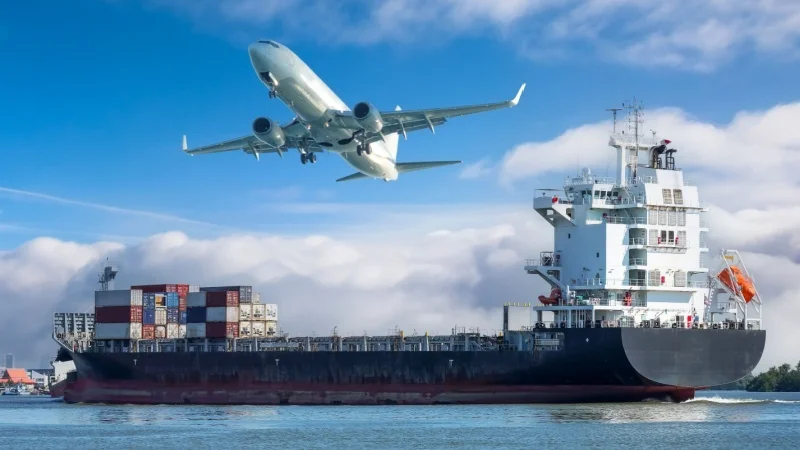While transporting goods, the choice between air cargo and sea cargo can feel like a balancing act between speed and economy. Air cargo offers the thrill of rapid delivery, speeding your products across the globe in hours, perfect for time-sensitive shipments that demand the utmost urgency. On the other hand, sea cargo sails a steadier course, embracing the vast expanse of oceans to deliver goods with unmatched capacity and cost-effectiveness. It is the reliable giant of international shipping, ideal for bulk items and budget-conscious businesses. Choosing between these two modes of transportation is not just about speed versus cost, but about aligning your logistics strategy with your business needs and priorities.
Air Cargo Vs Sea Cargo: Look for Swift and Cost-Effective Solutions for Your Needs
In the realm of global logistics, choosing between air cargo and sea cargo is a fundamental decision that impacts the efficiency, cost, and effectiveness of shipping operations. Both modes of transportation offer distinct advantages and cater to different needs depending on the nature of the cargo, urgency, and budget constraints. Air cargo is renowned for its speed and efficiency, making it the preferred choice for time-sensitive shipments. Sea cargo, on the other hand, excels in cost-effectiveness and capacity. Find the key differences between air cargo and sea cargo, exploring their respective benefits, challenges, and applications to help businesses make informed shipping decisions.
Find the Factors to Distinguish Air Freight from Ocean Freight
Understanding the key differences between air freight and sea freight is essential for businesses aiming to optimize their shipping strategies and logistics operations. By examining these differences, businesses can make informed decisions that balance the urgency, cost, and nature of their shipments, ultimately aligning their logistics practices with their operational needs and strategic goals.
- Cost: Sea Freight vs Air freight cost depends on the duration and capacity. Air freight, while offering rapid delivery and enhanced security, is generally much more expensive due to higher fuel consumption, airport fees, and handling charges. The premium for speed and the limited cargo capacity of airplanes contribute to its higher costs. Sea freight is more cost-effective, benefiting from lower fuel consumption per ton of cargo and the ability to transport large volumes at once. The extensive capacity of cargo ships and fewer handling charges result in reduced shipping costs.
- Speed: Air freight excels in delivering goods rapidly, often completing international shipments within hours or a few days, which is ideal for time-sensitive and high-value items. In contrast, ocean freight typically involves longer transit times, ranging from several days to weeks, due to the slower pace of cargo ships and the additional time required for port operations and handling. While sea cargo offers cost advantages and can accommodate larger volumes, air cargo accommodates high-value items in smaller volumes. Rely on a trustworthy air transport and freight forwarder for effective delivery of shipments.
- Types of Cargo: Air freight is well-suited for high-value, fragile, and perishable items that require quick delivery and stringent security, such as electronics, pharmaceuticals, and urgent documents. On the other hand, ocean freight is better equipped for large, bulky, or non-perishable cargo, such as raw materials, machinery, and bulk commodities. The difference between air freight and sea freight ensures that businesses can select the most appropriate shipping method based on the nature of their cargo and their specific logistical needs.
- Capacity: Air freight is constrained by the limited space available in cargo holds of aircraft, which can restrict the amount of goods transported and impose higher costs per unit of weight or volume. Ocean freight offers much greater capacity, with cargo ships capable of carrying vast quantities of goods, including oversized and heavy items. While air freight excels in speed and security for smaller shipments depending on types of air cargo, sea freight provides the scalability needed for large-scale and bulk cargo, highlighting the importance of capacity considerations in shipping decisions.
- Timeline: Air freight is designed for expedited shipping, offering significantly faster transit times, often ranging from a few hours to a few days, making it ideal for urgent and time-sensitive deliveries. This rapid timeline is essential for businesses that require quick turnaround or need to meet tight deadlines. Sea Cargo in Qatar involves a longer timeline, with shipments typically taking several days to weeks due to the slower speed of cargo ships and the additional time required for loading, unloading, and port processing. This extended timeline is well-suited for non-urgent shipments where cost savings and capacity are prioritized over speed.
Air cargo and Sea cargo play crucial roles in global logistics, each offering unique advantages and facing specific challenges. Air cargo is unmatched in speed and security, making it ideal for urgent and high-value shipments, while Sea cargo excels in cost-effectiveness and capacity, catering to bulk and non-time-sensitive transport needs. Understand the strengths and limitations of each mode and make informed decisions that align with your logistical requirements, budget constraints, and strategic goals by choosing the ideal cargo service provider in Qatar, Travelite.










